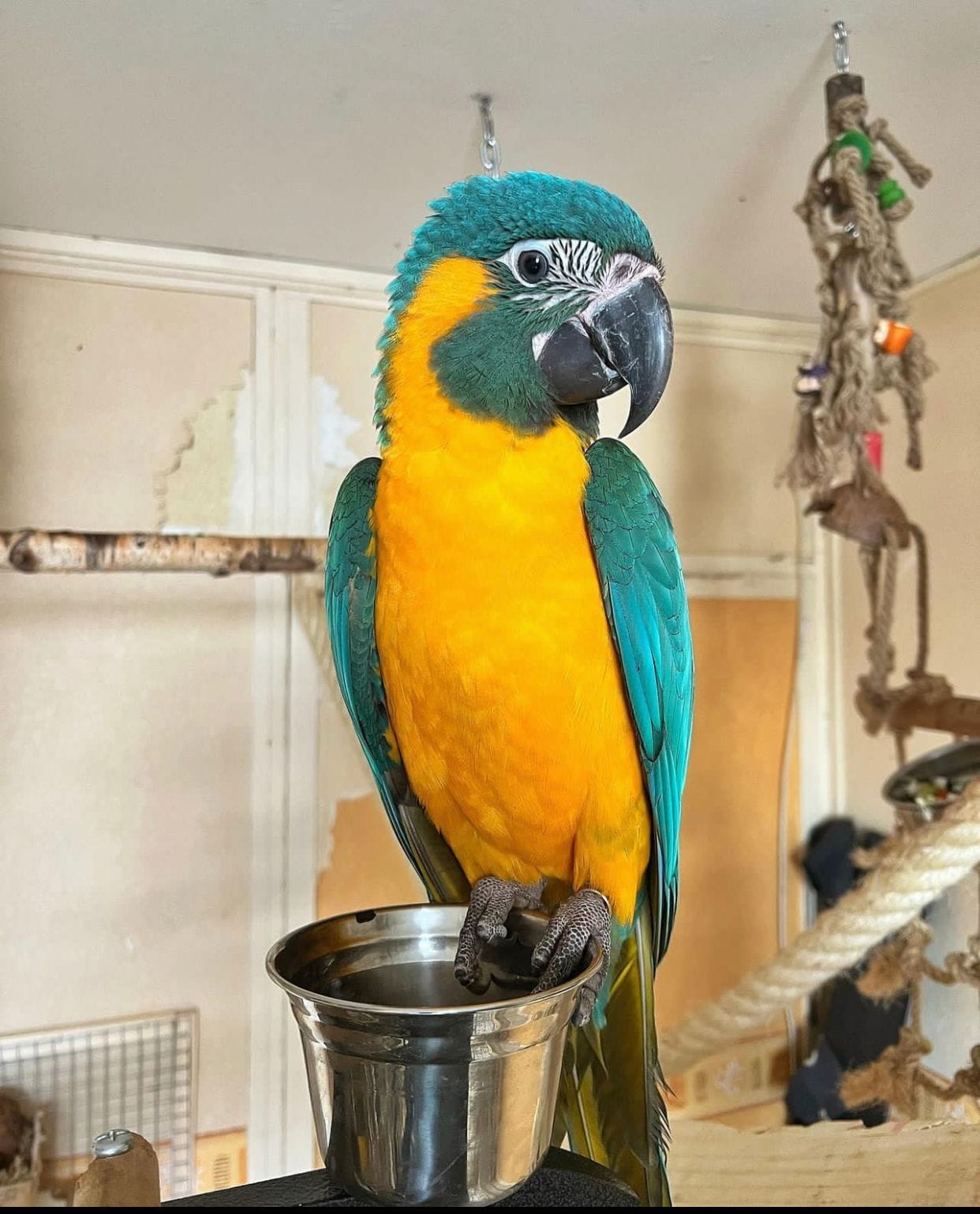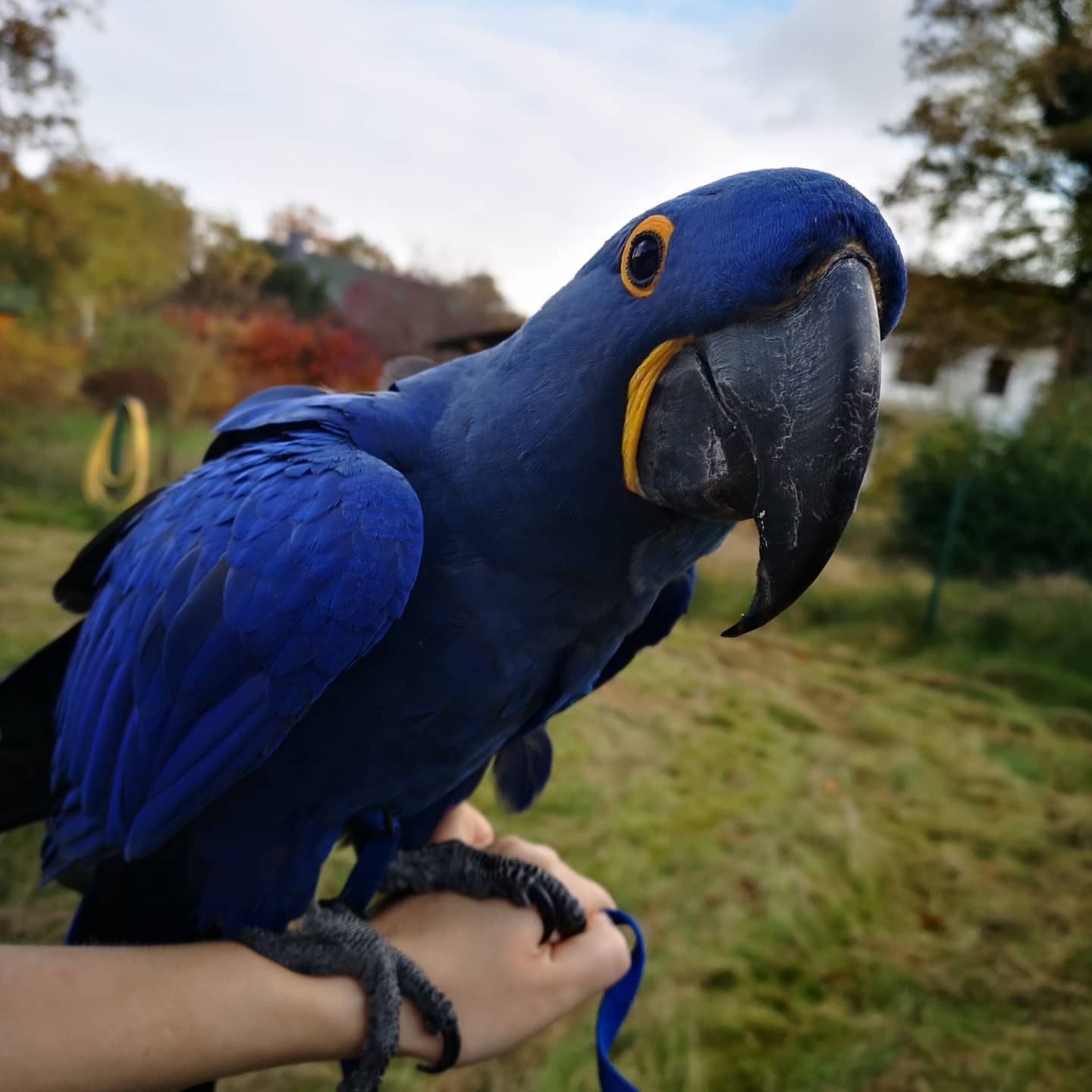The Hidden Secrets Of Leia Blue Macaw And Red Macaw
페이지 정보
작성자 Eusebia 작성일25-02-24 09:47 조회3회 댓글0건관련링크
본문
 How to Tame a Blue Macaw and Red Macaw
How to Tame a Blue Macaw and Red MacawMacaws typically choose a mate for life and spend much of their time together sharing food grooming, and taking care of young. Unfortunately, these magnificent birds are towards extinction in their natural habitat.
Humans' destruction of habitats and cage bird trade and poaching pose a major threat to this beautiful species.
Great Green spix macaw characteristics (https://reputablemacawbreeder67167.eedblog.com/32354530/11-ways-to-fully-redesign-your-fiona-Hyacinth-macaw-bird-for-sale)
The great green macaw representative species (Ara ambiguus) is the largest parrot found in Central America and one of the most striking birds found in the canopy of the rainforest. Its green plumage is accented by the red on its forehead and blue on its lower back, and tail feathers. Its long, pointed wings and tail let it easily maneuver through forests. Its beak is large and sturdy, well-suited for breaking open seeds and nuts. The great green macaw is a predator and, consequently, it plays an important role in sustaining healthy ecosystems of the rainforest. Seed dispersal is a key factor that allows species of trees such as the maiz biological tree Dipteryx oleifera to flourish and provide food for other species of animals.
These majestic birds live in small groups or pairs and spend the majority of their time flying high in the forest canopies searching for nuts, fruits, and seeds. They are well-known for nesting in hollow tree cavities, which they often line with grass and branches. The female will lay between two and three eggs, which will incubate for about 26-28 days. Once the chicks hatch, the male assists in feeding them.
Great green macaws that are captive are extremely intelligent and playful birds that make wonderful companion pets. However, it's important to keep in mind that these animals require plenty of space, attention, and patience in order to thrive. They are prone to bite and can be destructive if bored. They are also susceptible to certain health issues, such as proventricular dilatation and macaw-related wasting disease.
Like many other tropical species Great green macaws, too, are in decline. Their habitat is being destroyed by logging, mining agriculture, cattle ranching. Their numbers are also being impacted by illegal wildlife trade and hunting for food.
Protecting the habitat of these amazing creatures is the only way to ensure their survival. By creating corridors between protected zones, the creatures will be able to move freely and gain access to various sources of food. Ultimately, preserving the natural habitat of these beautiful birds will help to safeguard other species in danger that share their homes including the Scarlet Macaw and Yellow-naped Amazon.
Blue and Gold macaw pet shop
This beautiful bird is among the most sought-after parrots kept in captivity around the globe. It is intelligent and a very affectionate animal. It requires lots of interaction and training, but can be a wonderful companion if trained properly. However, macaws can be known to be aggressive if not properly trained and surrounded by clearly defined boundaries. This is why it is crucial to find a professional trainer who is aware of how to handle large birds and teach them tricks. Dave and Jamieleigh from BirdTricks have put together an excellent video that demonstrates how to handle the Blue and Gold Macaw. They share some tricks, tips, and techniques to help anyone train a macaw so that it is friendly and fun to interact with. Click HERE to watch their video.
Blue and gold macaws a member of the parrots family are neotropical neotropical bird species that are native to tropical Central America and Spix Macaw Characteristics South America (especially habitats with varzea) and woodland and savannah habitats as well as Trinidad and Tobago. They have mostly blue dorsum and tail feathers, with accents of yellow or gold and varying shades of green on the head. Their wings and wing covers are blue with green highlights. Their feet are zygodactyl and have two toes facing forward and two facing backwards. This adaptation allows them to grasp branches with ease.
Monogamous birds pair for life, and they remain together during breeding season. They build their nests in tree cavities which they dig up with their sturdy beaks. They typically lay two to three eggs and then incubate them for up to 25 days. After hatching, both parents feed the altricial chicks by regurgitation until they're able to manage themselves.
They are intelligent birds that communicate a variety of emotions through a variety of vocalizations. They also display a variety of courtship behaviors, including the cocking of their heads, flirting by raising the wings and blushing. They also show their emotions by swaying their tail feathers, bowing, prancing and bobbing.
They can also be playful and they love to chew toys. It is recommended that pet owners provide an assortment of sturdy, bird-safe toys that can be able to withstand the force of their jaw muscles. This will help keep your teeth healthy and prevent them from developing excessive tartar and plaque.
Red-shouldered Macaw
This small bird, also called the Hahn's Macaw is one of the smartest macaws. It's a very good speaker and is able to master a variety of tricks. It is also a lot more tranquil than other macaws. This makes it a great option for those who are worried about being a noisy bird. Although it can be nippy as a young child, it generally develops out of this behaviour and is extremely playful as an adult.
The bird is native to swamplands and savannahs as as tropical lowland habitats throughout Brazil, Venezuela Guyana and South-Eastern Peru. Its vibrant green coloration is ideal for hiding in the vegetation. It lay between two and five eggs that are incubated for a period of 24 days. After about two months the chicks are ready to fledge. The species usually couples for life and is usually found in pairs.
It is primarily hunting in search of flowers, berries, fruit, nuts, seeds and leaves in its natural habitat. The birds are also known to consume bugs. They are also known to congregate near clay cliffs. This is thought to help them eliminate any toxins that they may have picked up while eating their normal food.
Like other macaws Hahn's Macaws are prone to self-mutilation, feather plucking, nutritional disorders, proventricular dilatation and beaks that are overgrown. However, a well-balanced diet, regular veterinary checkups and proper maintenance of the cage can stop these issues from developing.
The bird can live up to 50 years in captivity. It is not typically available in pet stores with large sizes, but it can be found in avian-specialty stores and from bird breeders. It is intelligent to a high level, however it can be difficult for those who are new to training. It is a superb talker and can be taught to whistle, clap, and dance.
Hahn's Macaws can be very loud and are not recommended for apartment living. They require a huge cage with plenty of perches as well as food bowls. They must also be able to run regularly outside the cage. They are also very robust chewers and require a cage that is sturdy and is secured.
Blue and yellow Macaw
The Blue-and-Yellow Macaw (Ara ararauna) is a beautiful, large, tropical parrot. Like all Macaws is monogamous, and pairs for life. It is also susceptible to mimicry which makes it a good companion bird.
This species is native to South America and can be found across a wide range of habitats. Cloud forests, savannas and rainforests are all habitats that could be used. The Blue-and-Yellow Macaw is deemed endangered by the IUCN and conservation efforts are underway to protect this beautiful animal.
The birds can breed at the age of 3 or 4 years. It is believed that they are a pair for life and will stay together until one of them dies. The blue-and-yellow macaw will lay between two and three eggs in each nest. The female is the one who incubates eggs, while the male fights for the nest. Once the chicks hatch, they are dependent on their parents for food until they are able to feather themselves and begin to feed themselves.
In the wild, these birds are social creatures and be seen in groups with other Macaws and other species of parrots. They are intelligent and can learn a variety of sounds. The Blue-and-Yellow is an expert flyer. It can be observed performing amazing aerial maneuvers, and soaring through the forest canopy.
The Blue-and-Yellow macaw for sale is a beautiful, charismatic bird. It is an excellent option for anyone who is seeking a pet that will bring joy and companionship.
This gorgeous large tropical parrot is native to South America. It is a monogamous bird that is a lifelong mate and Spix Macaw characteristics has a strong inclination towards imitation. It also has a strong inclination to bond with humans, and is able to learn many different words and phrases.
 When the Blue-and-Yellow Macaw is between 3 and 4 years old, it reaches breeding age. Blue-and-yellow do macaws make good pets pair up for life and live in small groups. The Blue-and-Yellow species can be found in a variety of habitats including cloud forests and savannas. The Blue-and Yellow prefers to build nests in cavities in trees which they build by using their powerful beaks. Females lay between 2 and 3 eggs. She will then incubate them for about a week.
When the Blue-and-Yellow Macaw is between 3 and 4 years old, it reaches breeding age. Blue-and-yellow do macaws make good pets pair up for life and live in small groups. The Blue-and-Yellow species can be found in a variety of habitats including cloud forests and savannas. The Blue-and Yellow prefers to build nests in cavities in trees which they build by using their powerful beaks. Females lay between 2 and 3 eggs. She will then incubate them for about a week.댓글목록
등록된 댓글이 없습니다.
